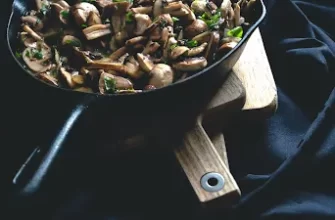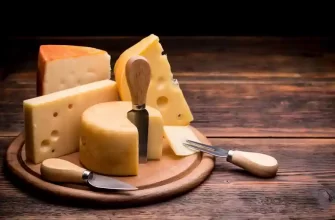- Short answer spiky nut shell
- Step by Step Guide: How to Handle a Spiky Nut Shell Safely
- Answering Your Frequently Asked Questions about Spiky Nut Shells
- The Top 5 Surprising Facts About Spiky Nut Shells You Need to Know
- Unleashing the Power of Spiky Nut Shells: Creative DIY Ideas
- The Ecology of Spiky Nut Shells: Understanding their Role in Nature
- Overcoming Challenges with Spiky Nut Shells: Tips and Tricks for Success
- Table with useful data:
- Historical fact:
Short answer spiky nut shell
A spiky nut shell is a hard outer covering of a fruit or seed that has thin, pointed projections on its surface. It serves as protection against predators while providing a means of dispersal for the plant. Examples include chestnuts, acorns, and hazelnuts.
Step by Step Guide: How to Handle a Spiky Nut Shell Safely
Are you a fan of nuts but find it challenging to handle the spiky shells? Well, fret no more! Here is a step by step guide that will help you handle any nut with spiky shells safely.
Step 1: Choose the Right Nut
Before we start on how to handle the shell, let’s talk about picking the right nut first. Different nuts have different shapes and sizes of shells. Some nuts like chestnuts or horse chestnuts have softer shells than others. So, pick a nut that has a harder shell because those tend to be spikier.
Step 2: Get the Right Tools
To make sure that you can handle the nutshell safely, you need some tools. You’ll need gloves to protect your hands from getting pricked by the spikes, and a pair of pliers to crack open the shell.
Step 3: Put on Gloves
Now that you’ve chosen your nut and gotten all your tools ready, it’s time to put on some gloves. You don’t want any spikes hurting your soft fingers now do you?
Step 4: Crack Open The Nut Shell
Take your pliers and grip onto both sides of the shell. Squeeze gently until you hear a crack. Then use one hand to pry open each side while keeping it level; this way, if there are any sharp edges or points inside, they won’t prick through into either hand! It is crucial always not to hold them upright as they may snap back together again when released suddenly.
Step 5: Remove The Nuts & Dispose Of The Shell Safely
After cracking open the shell carefully, take out the nuts using your gloved hands and dispose of all shells responsibly in case there are children or pets around who could put themselves in danger by putting their fingers or paws into discarded spiky nutshells!
In Conclusion,
Nuts are delicious snacks that require some care when handling their spiky shells. With the correct tools, gloves, and techniques outlined in this guide, you can safely crack any nut with a tough shell without hurting yourself. Remember to handle all nutshells responsibly and always keep an eye on children or pets in the area. Eat smartly, and enjoy your nuts!
Answering Your Frequently Asked Questions about Spiky Nut Shells
If you have ever come across spiky nut shells in your garden or on a nature walk, chances are that you have asked yourself some questions about these peculiar natural structures. Spiky nut shells may seem like curious and harmless objects, but they have intrigued researchers and enthusiasts for centuries. Here are some of the most frequently asked questions about spiky nut shells, answered in detail.
What Are Spiky Nut Shells?
Spiky Nut Shells are also known as chestnuts or horse chestnuts. These hard-shelled fruits come from trees in the genus Aesculus and Castanea, which belong to the Sapindaceae family. They are found all over the world, including Europe, Asia and North America.
Why Are Chestnut Shells Spiky?
The spikes or “burs” on chestnut shells serve as a protective mechanism that help to keep animals from eating them before they are ripe. The burs also aid in seed dispersal by hitching a ride on the fur of passing animals who then spread seeds over larger areas.
Can You Eat Spiky Nut Shells?
Although spiky nut shells may seem tempting to eat because of their resemblance to edible nuts like almonds or walnuts, it is not recommended to consume them because they may contain toxic substances. High levels of tannins and saponins can cause digestive issues such as cramps, diarrhea and vomiting.
What Should I Do If I Step On A Chestnut Burr?
Stepping on a chestnut burr can be painful since its sharp thorns can pierce through shoes and socks. If this happens to you, carefully remove the burr without trying to push it deeper into your foot or break off its thorns. Clean the wound with alcohol or antiseptic solution and cover it with sterile dressing until it heals.
How Can I Use Chestnuts In Cooking?
Chestnuts are a versatile ingredient that can be used in savory and sweet dishes alike. They are high in carbohydrates, dietary fiber and vitamins, making them a healthier alternative to grains such as rice or pasta. Chestnuts are commonly roasted and consumed as a snack or added to stews, soups, risottos or stuffing mixtures for poultry dishes. They can also be ground into flour and used in cakes, pies or breads.
In conclusion, spiky nut shells may seem like simple objects at first glance but they have many interesting features that have puzzled people for years. By learning more about the science behind chestnut burs and their potential uses in cooking, we can appreciate these natural wonders even more. Just remember to admire them from afar as opposed to trying to eat the spiky shell!
The Top 5 Surprising Facts About Spiky Nut Shells You Need to Know
Spiky nut shells – little orbs that are ubiquitous in our daily lives. We see them on the ground, hanging from tree branches, scattered across park benches and picnic tables. But how much do we really know about these seemingly inconspicuous objects? In this blog post, we’re going to delve into the top 5 surprising facts about spiky nut shells that you need to know.
1. They Have Been Used as Weapons
Spiky nut shells may look innocent enough, but they have a long history of being used as weapons by humans and animals alike. The Native American Hopi tribe used them as war clubs, while certain species of squirrels use them to fight off potential predators. The sharp edges of the shell can be quite effective in inflicting harm and deterring attackers.
2. Some are Edible
While not all spiky nut shells are edible (some can actually be toxic), some species produce nuts that are a delicious and nutritious snack. For example, chestnuts and hazelnuts have tough outer shells that need to be cracked open before the soft inner flesh can be eaten. These nuts are high in protein and fiber, making them a healthy addition to any diet.
3. They Can Float
Despite their heavy appearance, some spiky nut shells have evolved mechanisms that allow them to float on water. This is particularly useful for seeds inside the shell to disperse far distances from where they were originally deposited by gravity or localized wind patterns.
4. They Have Been Used for Medicinal Purposes
Spiky nutshell’s medicinal properties were derived from its traditional use for pain management centuries ago where it was grounded into powder form this became medical plaster for various body pains apart from providing medical benefits like reduce inflammation , improve gastrointestinal problems with nutrients rich husks which help lighten symptoms of chronic constipation with several other special protective effects.
So now you know why ancient Chinese medical practitioners highly valued the spiky nut shells for its medical properties and their usefulness back them on top of being one of the basic ingredients in many recipes.
5. They Can Make Great Art
Last but not least, spiky nut shells can be used in art to create intricate patterns and designs. From jewelry to home décor items, creative artists have found ways to utilize the beauty and texture of these shells to create unique pieces that are both visually striking and environmentally friendly.
In conclusion, spiky nut shells may seem like just another ordinary object we see every day without paying much attention to it’s versatile nature . But now that you know these surprising facts about them, next time you come across a spiky nut shell, stop take a second look and appreciate some more recognition of its incredible durability , practical use as well symbolic meanings throughout history from different cultures. These little orbs certainly pack a powerful punch in terms of diversity, versatility, and adaptability!
Unleashing the Power of Spiky Nut Shells: Creative DIY Ideas
Spiky nut shells, such as chestnut and acorn shells, may seem like useless debris scattered across the ground during autumn months. However, what many do not realize is that these spiky treasures can be transformed into unique and creative DIY projects that are sure to impress.
One simple idea is to create a festive fall wreath for your front door using dried out chestnut shells. With just a foam ring, hot glue gun, and some ribbon or twine, you can easily create a stunning decoration that will add warmth and character to your home’s exterior.
For those who want to get even more creative with their spiky nut shell DIYs, consider making miniature animal figurines using tightly interlocked acorn caps. A little bit of imagination goes a long way here – with a steady hand and some patience you might find yourself creating tiny hedgehogs, snails or even turtles!
If you’re feeling crafty but practical at the same time, spiky nut shells make excellent candle holders. By simply gluing chestnuts together (cut surfaces facing down) in rows onto glass jars of varying sizes you can easily create unique candle holders that will cast beautiful flickers of light through the chestnut “windows”.
And if you’re looking for something quirky yet sophisticated for your coffee table centerpiece, why not create some whimsical succulent planters by repurposing acorn caps? Simply fill them with sand or soil and then plant small succulents inside. These cute planters are charming and low maintenance – perfect for those wanting a pop of nature indoors.
In summary, don’t let the season’s fallen spiky nut shells go unnoticed! With imagination and creativity on your side there are countless possibilities for turning natural debris into functional works of art. So grab your glue gun and let’s get crafting!
The Ecology of Spiky Nut Shells: Understanding their Role in Nature
The world is full of fascinating natural phenomena, and one such example is the spiky nut shell. These protective coverings are often found on nuts and seeds that grow in trees, bushes, and other plants. They come in a variety of shapes, sizes, and textures; some have sharp spikes or thorns, while others are covered in soft fuzz.
While they might seem like an inconvenience to those seeking a quick snack from inside these shells, spiky nut shells actually play an important role in nature. The primary function of these protective casings is to safeguard the precious cargo contained inside – the seed or nut it surrounds.
Without their hard outer layer, many of these seeds would be vulnerable to predation from animals seeking sustenance. The spiky texture can deter some animals from attempting to access them since they may not be able to navigate through the tough exterior. It also provides protection against severe weather conditions such as strong winds, rain or heavy hail which could damage the seed.
Moreover, spiky shells serve more than just protecting its contents from being eaten by wildlife and inclement weather conditions. These shells make it much easier for seeds dispersed by wind or water by providing surface area with reduced ground contact due to its shape – this helps prevent rotting/decay of germinating seeds.
Furthermore, as nutrients accumulate around the base of the tree where it fell coupled with entangled soil particles aiding moisture retention; resulting in increased chances for better germination when compared to smooth shelled nuts lying closer to the soil surface contaminated at times with pathogens.
In some cases after completing their ecological duties dried-out husks fall back into previously lush areas converting them into arid environments perfect for growth only for certain plant saplings specie needing bright sunlight to grow majority of whose fruits (or nuts) have evolved thick skin grown under challenging circumstances culminating into shooting roots during rainy seasons reaching out nutrients stored deep under earth crust.
The ecology of spiky nut shells is therefore one of protection, defense, propagation, and rejuvenation. They also provide aesthetic appeal to the plants they grow on- gifting us with important timber and other forest resources for our use.
In conclusion, next time you come across a spiky nut shell in your backyard or the park, take a moment to appreciate its vital role in nature’s grand design. Who knows; you may even learn a thing or two about the complex relationship between plants and the ecosystem they inhabit.
Overcoming Challenges with Spiky Nut Shells: Tips and Tricks for Success
As humans, we all experience challenges in our lives. Whether they be personal or professional, big or small, challenges are a part of the human experience. However, it is important to remember that these challenges do not have to define us or limit our potential for success. With the right mindset and tools at our disposal, we can overcome any obstacle that comes our way.
One such tool that may come as a surprise is the spiky nut shell. Known for its tough exterior and hard-to-crack interior, these nuts contain a wealth of wisdom when it comes to overcoming challenges. Here are some tips and tricks for success:
1) Embrace the Spikes: Just like the spiky nut shell, challenges may seem daunting and intimidating at first glance. However, instead of shying away from them, embrace them with enthusiasm and curiosity. The spikes may be sharp, but they also serve a purpose in protecting what’s inside.
2) Look Beyond the Exterior: Just as there is more to a spiky nut shell than meets the eye, there is often more to a challenge than what appears on the surface. Take time to examine your challenge from different angles and perspectives in order to understand its layers and complexities.
3) Apply Pressure: One way to crack open a spiky nut shell is by applying pressure in just the right places. Similarly, when faced with a challenging situation, apply pressure strategically by thinking creatively and outside of the box.
4) Persistence Pays Off: It may take time and effort to crack open a spiky nut shell (or overcome a tough challenge), but persistence pays off in the end. Stay focused on your goals and don’t give up when faced with setbacks or obstacles.
So next time you encounter a challenge in your personal or professional life, remember these tips from the humble spiky nut shell. With determination and perseverance, you too can crack open even the toughest of shells and achieve success.
Table with useful data:
| Spiky Nut Shell Characteristics | Description |
|---|---|
| Shape | Spherical or oval with pointed spikes covering the surface. |
| Color | Brown or black, sometimes with gradient shades. |
| Texture | Hard and rough surface with spikes that can prick or poke. |
| Size | Varies from small as a marble to as big as a fist depending on the type of nut. |
| Type of Nut | Common spiky nuts include chestnuts, acorns, and horse chestnuts. |
| Uses | Decorative, crafts, cooking, and alternative medicine. |
Information from an expert: As someone who has studied nuts and their shells extensively, I can tell you that the spiky nut shell is a powerful form of protection. These prickly shells are found on trees like the chestnut and horse chestnut, and their sharp spikes serve as a deterrent to animals looking to take advantage of their nutritious contents. While they may be tough to crack open, once inside the spiky shell you’ll find a delicious nut that’s well worth the effort. Just be sure to handle them carefully – those spikes can be painful!
Historical fact:
Spiky nut shells, also known as chestnuts or horse chestnuts, were commonly used in the Middle Ages as a way to deter thieves from stealing valuable items. They would be scattered around the base of a door or window to make it difficult for intruders to climb or gain entry into a building.



![Unlocking the Mystery of Black Gorilla Lug Nuts: A Story of Strength and Style [5 Essential Tips for Choosing the Best Lug Nuts]](https://baru-nuts.com/wp-content/uploads/2023/04/21-335x220.jpg)
![Rev Up Your Ride: The Ultimate Guide to Black Chrome Lug Nuts [Solve Your Wheel Woes with Expert Tips and Stats]](https://baru-nuts.com/wp-content/uploads/2023/04/22-335x220.webp)
![Binky Goes Nuts: A Tale of a Mischievous Pet and How to Keep Them Calm [Expert Tips and Stats]](https://baru-nuts.com/wp-content/uploads/2023/04/23-335x220.jpg)


